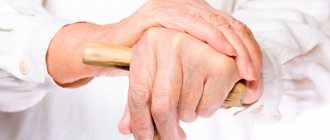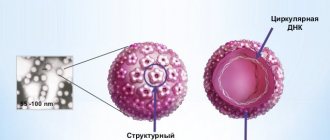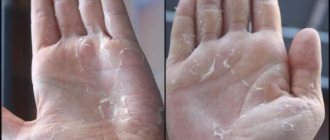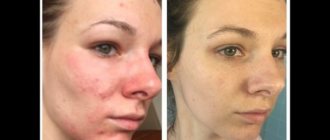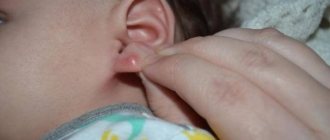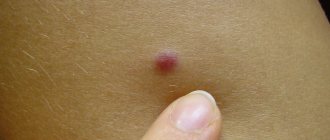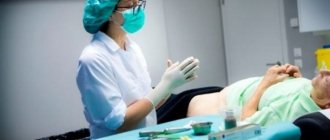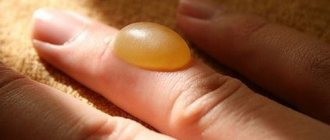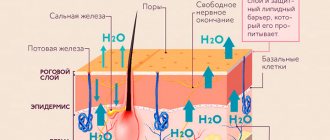A growth growing on the finger of the right or left hand can indicate a variety of joint diseases. It is possible to get rid of them only after eliminating the root cause.
For the most part, older people face this problem, but occasionally bumps are also detected in young people. Under no circumstances should you ignore the disease; you should contact a specialist as soon as possible and begin treatment.
Causes
Lumps on the fingers appear mostly in patients whose age has exceeded 45 years. The main factor here is senile changes in soft and bone tissues.
The provocateurs are:
- hormonal imbalance (in women it often appears during menopause);
- diabetes;
- metabolic disorders of various etymologies;
- obesity;
- alcoholism;
- unbalanced diet;
- smoking;
- hypertension;
- kidney diseases;
- injuries in the area of tendons, joints of the finger, hand;
- excessive physical activity.
Treatment methods: how to get rid of bumps on fingers
After a comprehensive examination, the doctor makes a diagnosis and prescribes the most appropriate treatment. Most often, several methods are used to eliminate the tumor; let’s look at them in more detail.
Medication therapy
Most often, drug therapy is used to treat bumps on the fingers. The following medications may be prescribed as such therapy:
- non-steroidal anti-inflammatory drugs (for example, Diclofenac). They are prescribed for severe pain;
- chondroprotectors (for restoration of cartilage tissue);
- antibiotics and antivirals;
- corticosteroid hormones.
The doctor will tell you in more detail how to treat bumps on your fingers. The specificity of the choice of medications lies in the reason that caused the development of tumors.
Physiotherapy
Many patients are interested in how to get rid of a bump on their finger using physiotherapy. It is worth noting that they give results at the initial stage of the disease, relieve inflammation, eliminate swelling and pain. The most effective procedures include:
- ultrasound;
- electrophoresis;
- paraffin therapy;
- magnetotherapy.
Exercises for hand joints
Special exercises are recommended to be performed during remission. If the lump on the finger does not cause discomfort, it is recommended to exercise with an expander daily. Any manipulation of the hands will be useful: extension, compression, shifting.
Such exercises help increase blood circulation and return joints to their former flexibility.
Folk remedies
Treatment of lumps on the fingers can be carried out using folk remedies. Compresses, lotions and ointments have a beneficial effect. Since natural ingredients can cause individual intolerance and be accompanied by allergic reactions, it is worth consulting with your doctor in advance. Let's look at the most effective treatment methods:
- compress with celandine. In order to prepare it, take 2 tablespoons of plant juice, which is used to lubricate the growths, having previously steamed the damaged finger. After this, the hand is wrapped in cling film, a bandage and a warm cloth. The duration of treatment with such compresses is 2-3 weeks.
- An ointment based on camphor, mustard powder and alcohol (or vodka). All of these ingredients are mixed in equal proportions. The resulting product is rubbed in before bed after a bath. The ointment helps soften growths and can be applied daily for 2 weeks.
- Alcohol compress. In order to prepare it, take alcohol and dilute it with water in equal proportions. The resulting product is moistened with a gauze bandage and applied to the tumor, wrapped with a warm cloth on top.
Surgery
Growths on the knuckles of the fingers are often removed through surgery. For example, in the case of hygroma, this helps prevent relapses. This method is used when the tumor grows rapidly, which is accompanied by severe pain. The operation is painless and lasts only 15-20 minutes. The tumor is eliminated by removing all its contents.
As an alternative to surgical intervention, growths from the fingers are removed using laser irradiation. It is performed under anesthesia, so the patient does not feel any discomfort. The advantage of this method of removal is its high cosmetic effect.
What diseases provoke the growth of cones on the phalanges
The subcutaneous growth causes almost no discomfort or pain. Discomfort usually appears on palpation. Over time, the bumps, however, always increase and limit the mobility of the joints.
The patient primarily views the growths as a cosmetic defect, which he tries to remove using various home methods. In reality, the reason often lies in the development of one or another dangerous disease. Most often identified:
- polyarthritis of the hand;
- arthrosis;
- gout;
- deforming osteoarthritis.
At the same time, it sometimes turns out that the growth that has formed on the hand is itself a primary ailment that arose against the background of:
- injuries;
- metabolic disorders, etc.
Meaning here:
- different types of benign formations (for example, hygroma);
- oncological pathologies;
- skin diseases (keratosis, etc.).
Sometimes, however, it turns out that the tumor is just a harmless wart.
Indications for removal of growths
It is better to remove any warts while they are small and do not cause inconvenience.
You should consult a doctor as soon as possible for advice and removal of the tumor if it:
- bleeding;
- hurts badly;
- fester;
- damaged;
- covered with cracks;
- changed color;
- growing quickly.
Doctors also recommend removing even small warts between the fingers, index fingers or thumbs to avoid injury and further infection.
Arthrosis
With this disease, hard cartilaginous tissue is gradually destroyed and the bones of the phalanges begin to grow. Eventually lumps form. Old people usually suffer from this disease. Changes provoke local metabolic disorders and degenerative processes.
In young people, arthrosis appears for the following reasons:
- abuse of harmful products;
- heredity;
- systematic injuries;
- high load on joints.
If bumps appear, this means that the pathology has entered the second stage. Additional signs are considered:
- swelling of the joints;
- proliferation of bone tissue.
Doctors call such growths Heberden's nodes. It is completely impossible to remove them, but proper treatment helps stop their further growth.
Arthrosis is treated:
- chondroprotectors;
- corticosteroids;
- massage;
- various physiotherapeutic procedures;
- baths with the addition of medicinal herbs.
Arthritis
In this chronic joint pathology, growths form when destructive processes lead to changes in bone and cartilage tissue. When it comes to osteoarthritis, the phalanges located under the nail plates are primarily affected. As the disease progresses, it leads to significant limitation of finger mobility and severe pain.
Medicines containing the following active ingredients help slow down the development of arthritis:
- chondroitin;
- glucosamine
Gout
And with this disease, bumps on the joints grow quite often. Here the cause of their occurrence is the deposition of uric acid salts. Gout is almost always diagnosed in patients over 50 years of age. As a rule, growths form on the feet in the area of the big toe, but in advanced cases they are also found on the hands.
During periods of exacerbation, patients complain of:
- severe pain;
- swelling;
- inflammation of the soft tissues adjacent to the joint.
The main factor contributing to the development of gout is poor diet. When analyzing the latter, an excess is always detected:
- fatty meat;
- alcohol;
- strong tea and coffee.
Disorders of metabolic processes lead to the accumulation of salts in small joints.
What is a growth on the phalanx of the finger? Lump on the middle finger
Lump on the joint of the thumb and middle finger
The lump on the joint of the finger is a dense growth that causes pain when bending. A synovial cyst looks like a tubercle, the cavity of which is filled with clear liquid. Knuckle bumps are located near the nail plate and thin the skin on the finger, forming a shallow nail groove. Pathological changes in the thumb joint appear with arthritis. Hard formations at the base of the joint are called Heberden's nodes. They significantly limit movements in the hands. Bumps appear on the phalanges of the middle and index fingers on the palm side. They are hard to the touch, similar to formations of cartilage tissue, causing some discomfort to the patient. Seals often accompany the course of polyarthritis in older people.
Causes of Heberden nodes
Chronic arthritis of the fingers is formed under the influence of unfavorable factors:
- hypothermia;
- overvoltage;
- unfavorable climate conditions;
- large range of motion.
The disease affects elderly and middle-aged women. Humidity changes the course of autoimmune processes in the patient's body, causing the appearance of an aggressive reaction in the synovial cartilage tissue of the finger joints. Viral infection, constant stress, and hereditary predisposition trigger the development of the pathological process and contribute to the formation of Heberden's nodes.
Arthritis bumps are formed depending on the strength of the influence of biological factors and the susceptibility of the patients, their age and gender. In young people, hardening of the joints occurs due to juvenile arthritis, which is characterized by changes in connective tissue. The nodules are pea-sized and affect the joints of the hand, located on the extensor surface. The reason for their appearance is due to seropositive rheumatoid arthritis in the active phase. The development of the disease is facilitated by previously suffered bruises and injuries to the joints of the fingers, obesity, and bad habits (smoking and alcohol addiction).
Signs of seals on the finger joint
The first manifestations of the disease are individual for each patient. The patient is bothered by small bumps on the joints of the thumb and index fingers, painful when pressed. Movement in the fingers is preserved in full, but a slight pain is felt, which intensifies when squeezing cylindrical objects. Some patients note the appearance of nodules that resemble a mosquito bite, but are denser and harder, and the finger itself, on which the lump is located, swells and turns red. The appearance of the lump is preceded by severe pain in the joint of the thumb, and much later red bumps form on the flexor surfaces.
On the joint of the index finger, the lump often increases in size in a short time, protruding above the surface of the skin. The patient needs to see a therapist or rheumatologist to determine the cause of the disease and prescribe effective treatment. On the finger, the fibroma grows to a large size, causing discomfort due to pressure on the nerve endings in nearby tissues. As it develops, the cone changes its color to a darker one.
Synovial cyst
It is a relatively small single growth located on the finger. In another way it is also called “hygroma”. This neoplasm is benign in nature. The cyst inside is filled with viscous fluid. Its development is not accompanied by pain.
The tumor appears, as a rule, in people who, due to their occupation, are forced to work hard with their fingers. The risk group includes:
- PC operators;
- pianists;
- massage therapists
The skin color in the area of education is either the same as in the neighborhood, or light pink. In the early stages, the cyst can be easily eliminated using conservative physiotherapeutic methods:
- paraffin;
- balneological procedures;
- electrophoresis;
- ultraviolet.
Bumps that interfere with finger movement are excised during surgery.
Medicinal treatments
If a callus is detected on the skin, the area should be treated with talc followed by application of cream. It is recommended to do hand baths , but if the callus does not go away for a long time, then you should resort to other methods.
How to remove dry calluses on hands
- Modern medicine offers a large number of ways to remove a callus on a finger. For home use, the most suitable patches are those that should be applied directly to the callus. This patch is indispensable for dry calluses; its effect is aimed at softening it. After a few days, all you have to do is remove what is left of the callus with a washcloth.
- is also good for softening calluses . It is often used specifically for calluses that occur on the hands.
- Regular salicylic acid has a similar softening effect It should be added to regular hand baths.
Treatment of watery calluses
- If the callus is watery, then it is recommended to apply targeted ointments to it , and then bandage the application site.
- Since such a callus needs to be dried, iodine can be applied . It is worth treating the problem area every hour.
Traditional methods of getting rid of calluses have become widespread. Often such methods involve the use of various herbs.
Keratosis
If growths from hardened dermis appear on the hands, then doctors diagnose “keratosis”. They are formed due to:
- diseases of the endocrine system;
- inadequate diet;
- thermal and chemical burns;
- genetic predisposition.
A provocateur is considered to be a prolonged mechanical impact on a certain area of the hand, leading to the formation of calluses there. The problem is mainly eliminated by adjusting the diet (increasing the proportion of plant foods). The skin is softened with various ointments containing hormones and healing components.
Why does it hurt on my finger when pressed?
If painful sensations occur, it is necessary to visually inspect the growth, check whether there are any cracks, inflammation, bleeding, or whether the skin around the wart is inflamed.
If there are lesions on the wart, pain occurs because of them; if the skin around the growth is red, infection has occurred.
Warts are hormone-dependent tumors; when the background changes, especially in women, they can begin to grow and slightly hurt when pressed. The growth of warts on a girl’s fingers is a reason to contact a gynecologist and endocrinologist and get tested.
Reference. Growths can also become painful and inflamed during stress, fatigue, or lack of sleep - in this case, a decrease in immunity occurs and the papillomavirus is activated.
Friction
Constant friction causes damage to the upper layer of the growth, tissue drying out, cracks and potentially infection.
Friction with the sleeve of a jacket, the handle of a bag, or simply the teenager’s habit of constantly touching the growth leads to increased tissue sensitivity.
If the growth is left at rest, the surface will be restored and the unpleasant sensations will go away.
Damage
Papillomatous formations are attached to the skin with a thin stalk, through which they receive oxygen and nutrition. Friction from clothing, a tool, a door handle, or any hard object can cause the stem to twist and cause superficial damage to the formation. When a wart is damaged, the following unpleasant sensations occur:
- itchy, tingling pain, sometimes pulsating;
- the skin around the tumor becomes red and inflamed;
- If the wound is not treated in time, an infection can penetrate through microcracks, causing inflammation and suppuration of the tumor.
To completely eliminate symptoms or remove a wart, you must consult a doctor. To relieve discomfort before consulting a doctor and to prevent infection, the wart must be treated:
- three percent hydrogen peroxide;
- alcohol solution of propolis;
- warm soda solution;
- attach an aloe leaf and secure with a bandage.
Baking soda will stop the action of the virus and cleanse the wound of fungus. Aloe has wound-healing properties and will help avoid complications if the tumor is damaged.
Malignancy
Degeneration of a tumor on a finger into a malignant one occurs very rarely. In order for the process to start, a number of conditions are necessary:
- serious infection of the wart after injury;
- hormonal problems - after a serious illness, taking medications;
- constant colds due to weakened immunity;
- gastrointestinal diseases in the acute stage, diabetes mellitus, kidney disease;
- severe stress - with school, work, personal life.
Important!
When a standard neoplasm degenerates into a malignant one, most often there is a change in the color of the growth, shape and appearance. Deep cracks appear, pus begins to ooze, and sometimes a small amount of blood.
The area around the growth becomes inflamed, and the lymph nodes next to the wart become inflamed. If such changes occur, you need to see a doctor as soon as possible.
A timely identified process will allow the wart to be removed without a trace and without further risks for the patient.
Pain after removal
The following methods are currently used to remove warts:
- electrocoagulation - the effect on the tissue and leg that feeds the formation with an electric current, as a result of which the formation ceases to receive nutrition, dries out and is removed. The most modern method, painless, leaving no scars;
- laser destruction - neat growth with liquid nitrogen;
- laser destruction - careful removal of warts with a laser;
- surgical method - cutting off the formation with a scalpel under local anesthesia. The most outdated and ineffective method, since it leaves scars and there is a high probability of further infection of the site of tissue damage.
After removal, the damaged area usually ache slightly for several days. This is completely natural and there is no need to worry about it.
It is urgent to visit a doctor if the removal site:
- swollen;
- blushed;
- festered;
- it hurts very much;
The person who underwent the removal procedure developed a temperature above subfebrile. In this case, there is a high risk of infection getting into the wound - a virus, fungus or bacteria.
